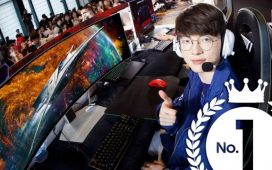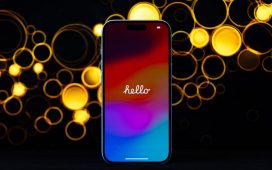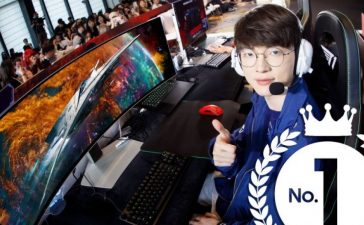Ahmed El-Madhoun has been tweeting videos of the devastation in Gaza since the war between Israel and Hamas began. In one clip, he asks hospital staff whether the condition of a baby girl, Misk Abu Aisha, is serious. She’s wrapped in pajamas and a blanket El-Madhoun bought for her. The healthcare workers answer that she’s stable.
El-Madhoun sourced the funding for Aisha’s clothes and milk from someone who got in touch via X, formerly Twitter, although only after his phone could pierce the communications blackout that has enshrouded Gaza in the wake of Israel’s invasion. He credits an Egyptian activist, Mirna El Helbawi, with restoring his access to the internet. El Helbawi has been spearheading a Twitter campaign, #ConnectingGaza, to give Palestinians embedded SIMs (eSIMs), a software version of the insertable chip used to connect a phone to cellular networks and the internet. To date, El Helbawi and her group, the Cairo-based Connecting Humanity, say they have connected more than 50,000 Palestinians via donated eSIMs.
El Helbawi, 31, knew communication was going to be a major issue for the Palestinians when the war began. Large numbers of Palestinians have been cut off from the outside world and even from others within the Gaza Strip after Israeli airstrikes and fuel shortages cratered communications infrastructure in Gaza. Without being able to access news sites, residents often have no idea what is happening in the neighborhoods around them unless they have witnessed an event for themselves.
SIMs are small card-shaped circuits in a phone that connect it to wireless networks and identify who you are, explained Roger Entner, the founder of Recon Analytics, a telecommunications consultancy. eSIMs are the software version of that, baked into a chip already inside the phone to be activated on the purchase of a wireless plan. A QR code awakens the software, allowing eSIMs to be shared virtually. Entner said the eSIM standard was developed in 2012, but big-device companies like Apple only started offering it in 2018.
Donors purchase eSIMs from telecommunications providers in their home countries, so Gaza residents are connecting to remote networks, allowing them to circumvent the near-total collapse of Gaza’s largest cell network providers. Most internet connections are touch and go, making even the delivery of eSIMs difficult because they require scanning QR codes.
One of El Helbawi’s Twitter followers first proposed the idea of using eSIMs to connect Palestinians with each other and the outside world. Physical SIM cards, the older and more common way of connecting phones to cellular networks and the internet, would be much more difficult to send to people in Gaza. If El Helbawi could find one person still connected to the internet, they could activate others’ cell phones in a spreading network.
El Helbawi ran two tests. One of the first people she connected was El-Madhoun. When the war started, El-Madhoun said via his X account: “I had an Israeli SIM card ‘cellcom’ that I got from one of the Gazan workers who used to work in Instrael. I connected to the Internet through it, and then it got blocked.” Israel has clamped down on use of eSIMs within Gaza for the better part of a decade.
During those few minutes El-Madhoun was online with the Israeli eSIM card, he tweeted to ask for help in getting a more permanent connection. “Mirna quickly and proactively assisted me, and I was able to access the Internet afterwards through the eSIM,” he wrote. In good conditions, eSIMs last between five days and 90 days, but their lifespans are often significantly shorter in Gaza. Entner said that for an eSIM’s activation to work, it needs to be camouflaged as being from an American provider or other Israeli allies, he said. In that case, the Israeli government may not cut it off.
After the success of the two test trials, El Helbawi began tweeting. She asked her followers to purchase eSIMs through their phone providers. Once they buy an eSIM, they send her the QR code. Then El Helbawi activates the eSIM and sends the code to a Gaza resident. When she connects one Palestinian’s phone, she asks that person for the phone information of the other Palestinians next to him. One by one, the connection spreads.
In Cairo, El Helbawi is not working alone. She has a group of 11 people who work daily, whenever they can, to connect Palestinian phones. She works as a writer, and she’s constantly tweeting too. She tweets instructions, asking people to send her the QR codes. She tweets about what she hears on the voice notes of those she is trying to help, which is often heavy bombing in the background.
after newsletter promotion
At a very young age, El Helbawi said, she witnessed the horrors of conflict in the Middle East. She recalled seeing the image of Muhammed Al Durrah, 12, lying next to his father, dead, on 30 September 2000, during the second intifada. El Helbawi was eight. “I was helpless,” she said. “I believe Palestinians deserve to live in peace.”
El Helbawi’s message and stories like El-Madhoun’s are resonating in unexpected corners of the world. In Urmila, Italy, Giulia D Lorenzo, an artist, didn’t have the money to buy an eSIM. Instead, she’s gifted three drawings of favorite video game characters to those who did. A former English instructor, Rehanah Bhathal, 65, had heard about El Helbawi’s movement through another person’s tweet. Bhathal, who lives in Kuala Lumpur, Malaysia, decided to take action. She purchased an eSIM for a Palestinian for about $17.
“It’s another way of participating and feeling that you did something. It’s so personal and so intimate,” Bhathal said. She could monitor the person through their phone account once it was activated and know they were OK. But the activation didn’t last long – only about a day. She worried about what had happened to the stranger.











